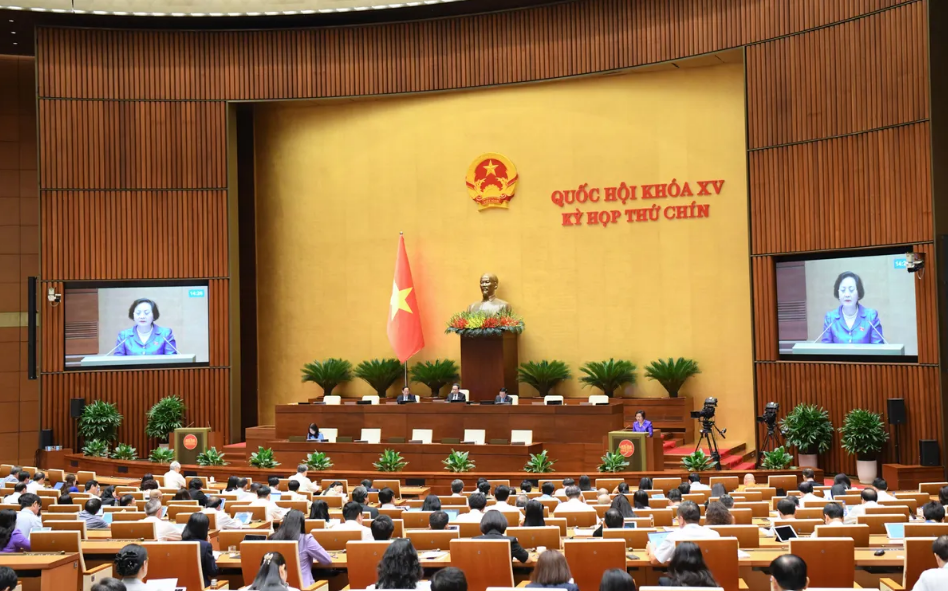National Assembly expected to enact provincial merger plan on June 12
After reorganization, the country will have 34 subnational administrative units, including six cities and 28 provinces.
THE HANOI TIMES — The Committee for Legal and Judicial Affairs has called for the immediate enforcement of a resolution on merging provinces and cities, urging it to take effect upon National Assembly approval on June 12, three weeks earlier than the government’s proposed July 1 start.

Minister of Home Affairs Pham Thi Thanh Tra presents the proposal at the National Assembly session. Photo: quochoi.vn
Committee Chairman Hoang Thanh Tung presented presented the recommendation during a June 11 session, as lawmakers reviewed the government’s 2025 plan for territorial reorganization.
Tung said early enforcement would give local authorities a clear legal basis to begin preparations, ensuring new administrative units are operational on schedule.
According to the government's proposal, 11 provinces and centrally governed cities will remain unchanged, with ten of them meeting the required criteria. These include Hanoi, Hue, Lai Chau, Dien Bien, Son La, Lang Son, Quang Ninh, Thanh Hoa, Nghe An, and Ha Tinh. Cao Bang is considered a special case. The remaining 52 provincial-level units will be consolidated into 23 new provinces and cities.
Following the reorganization, the country will have a total of 34 provincial-level administrative units, including six subnational cities and 28 provinces from the current 63 in total.
Minister of Home Affairs Pham Thi Thanh Tra stated that the reorganization process has been undertaken cautiously, thoroughly, and methodically, in full compliance with the Constitution and laws. The primary objectives are national development and balancing stability with innovation to ensure long-term sustainability.
“The restructuring is expected to unlock potential, maximize advantages, and expand development space for administrative units,” said Tra.
She added that the reorganization aims to promote balanced, rapid, and sustainable development across the country and contribute to the emergence of new economic centers that are competitive regionally and globally.
Tra also stated that the reorganization is an opportunity to improve governance capacity, lay the groundwork for stronger decentralization, and enhance the autonomy and accountability of local governments, not merely an administrative exercise.
According to the data, the 52 provinces that are subject to the merger currently employ approximately 447,600 civil servants. Of the 38,182 government office buildings at the provincial level, around 34,000 are expected to remain in use and approximately 4,200 will be left vacant.
The Committee for Legal and Judicial Affairs has called on the government to instruct ministries, agencies, and localities to swiftly restructure and streamline organizational systems, allocate personnel appropriately, and comprehensively address issues related to public finance and assets following the reorganization.
To carry out the National Assembly's resolution, the recently established provincial and local administrations must create comprehensive plans. They must proactively establish the prerequisites for a seamless and prompt transition of duties and responsibilities between administrative levels.











